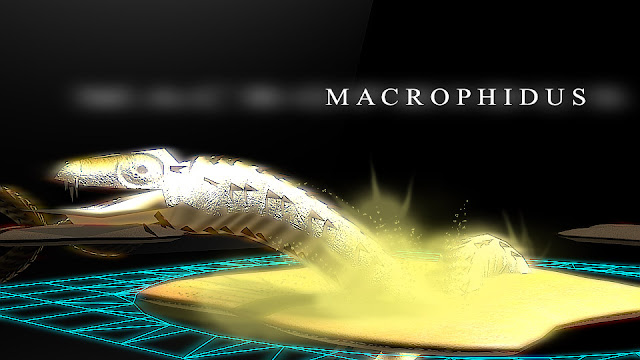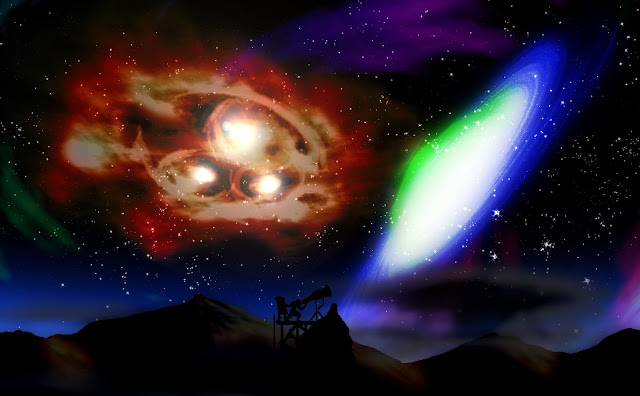Lost Chronicles- Macrophidus
Herein the Lost Chronicles resides those lost amidst the winds of time, unknown to any alive, except to those who know where they are. Those whose true nature were forgotten can live here, forever untouched by the world, without law or death.
Here there be monsters.
Only the luckiest die of starvation in the desert. The rest fall victim to the Jericho serpent- Macrophidus gobi.*
Snakes are close relatives of the Archosaurs, those being the same family that the dinosaurs and crocodiles are found in. Like their cousins, some species developed armor plating. This adaptation grants them nigh-invincibility and denies almost any natural predators. At 70 feet long, the largest of these armored serpents rightly deserved its nickname "Jericho", the infamous Canaan city in the Old Testament.
Spines and armor notwithstanding, this massive beast is also a viper. Any beast that it couldn't swallow whole- and there were plenty of those in the Gobi Desert 75 million years ago- could easily be skewered by its venomous, 8-foot tusks.
On its own, the venom isn't extremely potent, but this beast takes its prey down with power as well as poison. In a form very similar to a sidewinder's, it "swims" through the sand silently to sneak up on its meal. By the time the victim realizes what's happening, it has already been bitten or gored. The shock of the incident increases heart rates, pushing the venom through the bloodstream even faster. All Macrophidus has to do is wait for the prey's own body to kill itself.
However effective this hunter may seem, its burrowing strategy gives it a disastrous handicap: It can only hunt in fine, desert sand. In any other environment, the soil would be too thick for it to move, and its spiny armor would create too much noise on the ground. Its only chance for feeding would come during mass migrations that require desert crossings. So, yes, the time frame held some of the largest animals to walk on the planet, but that still only satisfied this beast a handful of times per month. Its name was made, though, and he set a mark against the desert for all wayward wanderers to see.
Rendered in Blender 2.6
*It is important to note that some of the animals in this collection are not based off of any fossil records, but are feasible via extensive research.
Here there be monsters.
Only the luckiest die of starvation in the desert. The rest fall victim to the Jericho serpent- Macrophidus gobi.*
Snakes are close relatives of the Archosaurs, those being the same family that the dinosaurs and crocodiles are found in. Like their cousins, some species developed armor plating. This adaptation grants them nigh-invincibility and denies almost any natural predators. At 70 feet long, the largest of these armored serpents rightly deserved its nickname "Jericho", the infamous Canaan city in the Old Testament.
Spines and armor notwithstanding, this massive beast is also a viper. Any beast that it couldn't swallow whole- and there were plenty of those in the Gobi Desert 75 million years ago- could easily be skewered by its venomous, 8-foot tusks.
On its own, the venom isn't extremely potent, but this beast takes its prey down with power as well as poison. In a form very similar to a sidewinder's, it "swims" through the sand silently to sneak up on its meal. By the time the victim realizes what's happening, it has already been bitten or gored. The shock of the incident increases heart rates, pushing the venom through the bloodstream even faster. All Macrophidus has to do is wait for the prey's own body to kill itself.
However effective this hunter may seem, its burrowing strategy gives it a disastrous handicap: It can only hunt in fine, desert sand. In any other environment, the soil would be too thick for it to move, and its spiny armor would create too much noise on the ground. Its only chance for feeding would come during mass migrations that require desert crossings. So, yes, the time frame held some of the largest animals to walk on the planet, but that still only satisfied this beast a handful of times per month. Its name was made, though, and he set a mark against the desert for all wayward wanderers to see.
Rendered in Blender 2.6
*It is important to note that some of the animals in this collection are not based off of any fossil records, but are feasible via extensive research.



Comments
Post a Comment
Thank you very much for your thoughts! If you have questions, we will attempt to reach back to you within the next few days.